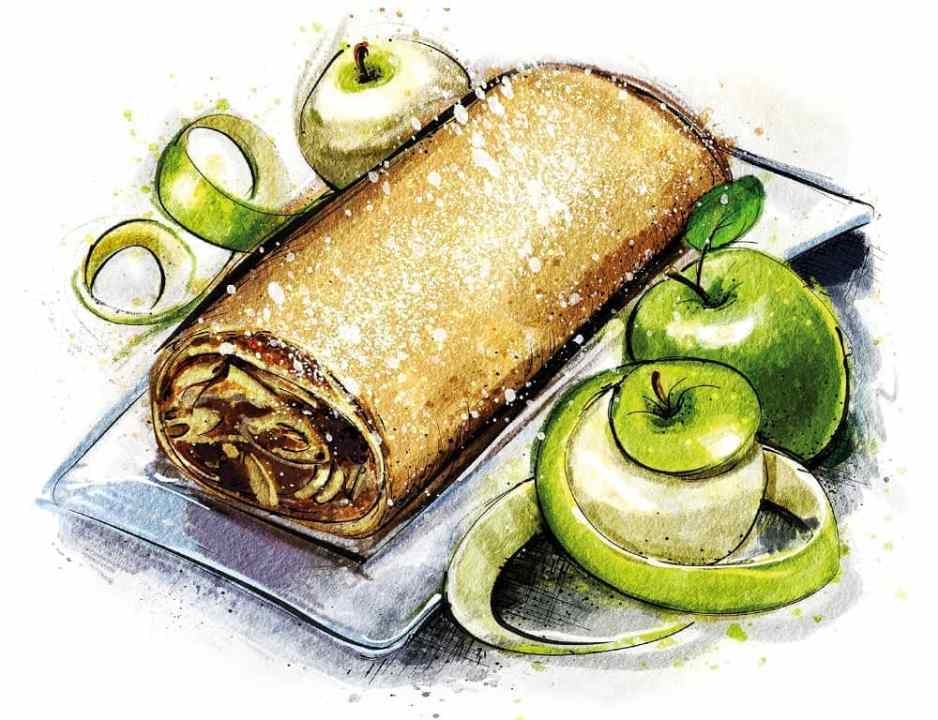It’s possible that, like me, your first encounter with the Grande Dame of the Austrian pastry world, the apfelstrudel, was not in fact in one of the famed Viennese grand cafés, but rather from the freezer aisle at the supermarket. If it was anything like mine, it was probably a latticed, puffed version; the one I remember from childhood had blackberries mixed into the apple, which peeked through the holes in the pastry. I have no interest in denigrating our Sunday lunch pudding staple. In fact I loved it, served with thick, cold custard, straight from the carton. But it is fair to say that a true apple strudel is a little different.
Strudels – meaning a filled, enclosed layered pastry – can be sweet or savoury, but the apple version is by far the most famous. Although it dates back at least as far as the 17th century, it is probably best known as a mainstay of those glamorous grand cafés popular at the turn of the 20th, sitting on pretty counters of Viennoiserie, alongside glossy Sachertorte and powder-dusted Kugelhopf. The name derives from the Middle High German word meaning swirl or whirlpool, which probably refers to the way in which the pastry eddies around the filling to create a spiral inside the pudding. A proper apple strudel is made with a particularly thin pastry, which is filled with spiced apple, sultanas or raisins, and sweetened breadcrumbs.
Strudel pastry sits somewhere between filo and puff pastry: it is more robust than filo but lacks the cold butter between the layers of puff, so doesn’t expand skywards in the same way. It is worked until very elastic, then stretched and stretched across a clean tablecloth, ever so gently, until (or so the traditional test goes) you can read newsprint through it. One origin story – as unsubstantiated as it is charming – tells us that the strudel chef required that the pastry be thin enough to read a love letter.








Comments
Join the debate for just £1 a month
Be part of the conversation with other Spectator readers by getting your first three months for £3.
UNLOCK ACCESS Just £1 a monthAlready a subscriber? Log in